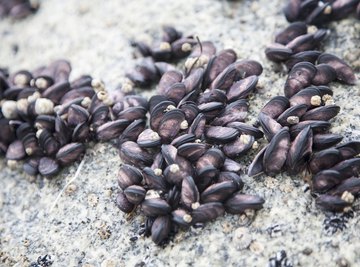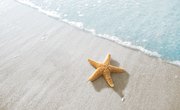
Speaking in a universal sense, "marine growth" would refer to all life in the ocean, including aquatic plants, shellfish, fish and aquatic mammals such as whales. Within the shipping industry, "marine growth" is a term that is used to specifically refer to problematic species that attach to or grow on ships and oceanic infrastructure, often causing problems in their functioning.
Varieties
Both plant and animal life can contribute to problems caused by marine growth. Plants include various forms of algae, slime and seaweed that can grow profusely on ship hulls, pilings and the underwater portions of structures such as oil rigs and piers. Animals include barnacles, mussels and other species of adhesive shellfish that will adhere to any underwater surface and reproduce in great numbers.
Reasons
Underwater plants and animals that adhere to surfaces as part of their life cycle do this as a means of survival and evolutionary advantage. Some marine species gain advantage by being fast and mobile, while others protect themselves through the opposite technique, by being immobile and impervious. A barnacle that is adhered to a surface, protected by a rock-like shell, and surrounded by millions of other barnacles, stands a very good chance of survival in the ongoing competition of undersea life.
Impact
The process of plant and animal life growing on human underwater structures is known as "fouling," and its impact on the efficiency and profits of the shipping industry is huge. Ship hulls that are overgrown with shellfish will make the ship far less efficient when traveling through water. Pilings and posts that are fouled with seaweed and barnacles are subject to more rapid corrosion, and need more frequent maintenance.
Solutions
Most ship hulls are painted with anti-fouling paint that is intended to discourage the adherence of barnacles, mollusks and other undersea life. Ships are also dry docked periodically and cleaned with a combination of pressure washing and chemicals. The prevention of fouling on ship hulls has become more challenging since the banning of organotin substances in 2003, in reaction to the dangers that these substances present to ocean health.
References
About the Author
Jagg Xaxx has been writing since 1983. His primary areas of writing include surrealism, Buddhist iconography and environmental issues. Xaxx worked as a cabinetmaker for 12 years, as well as building and renovating several houses. Xaxx holds a Doctor of Philosophy in art history from the University of Manchester in the U.K.
